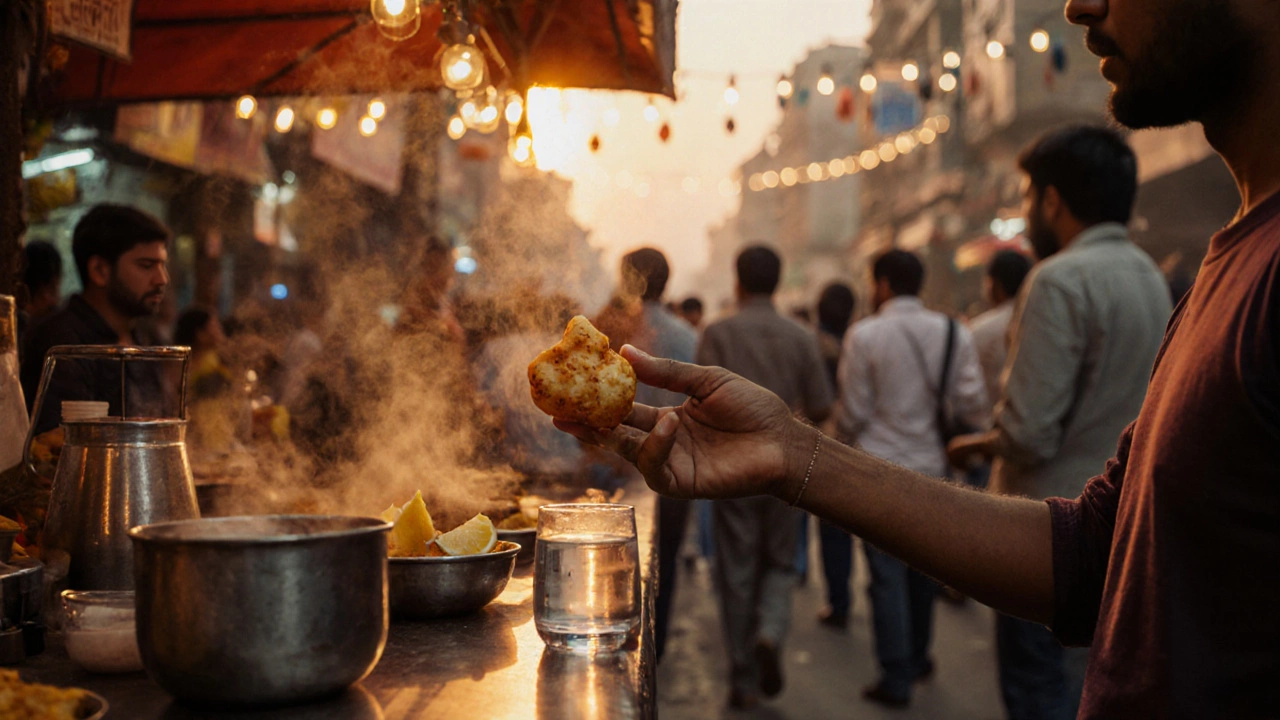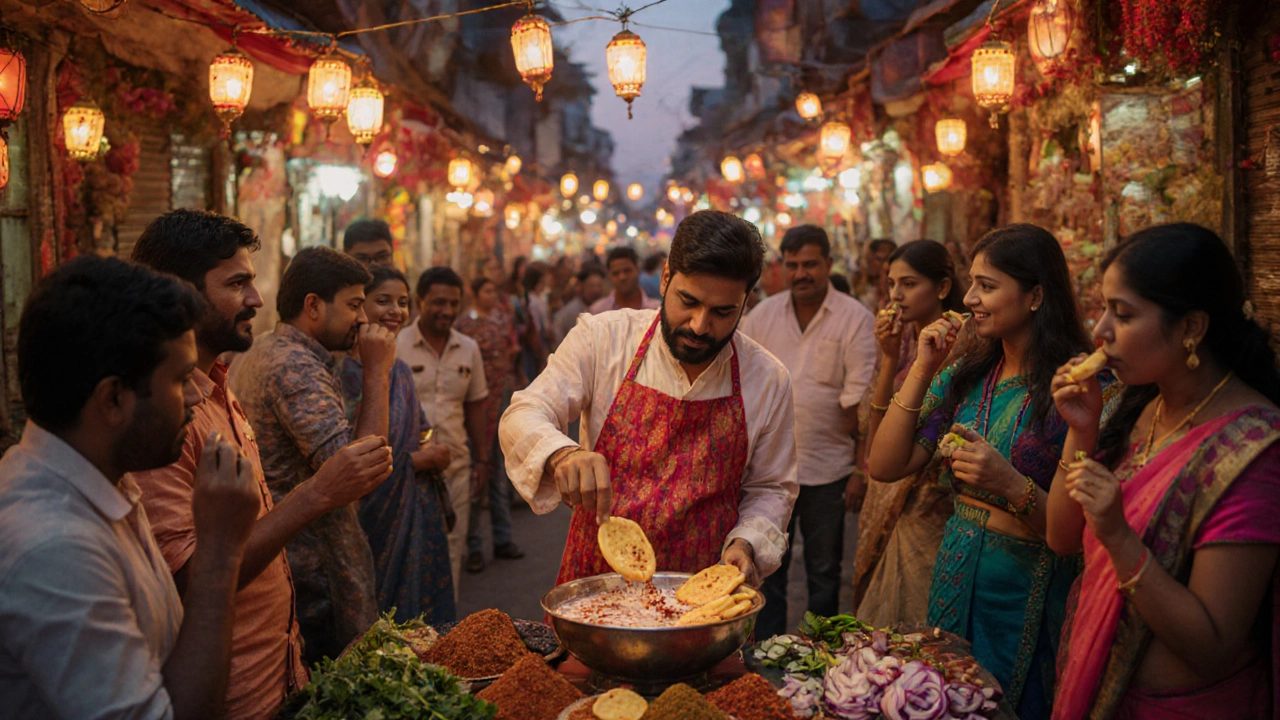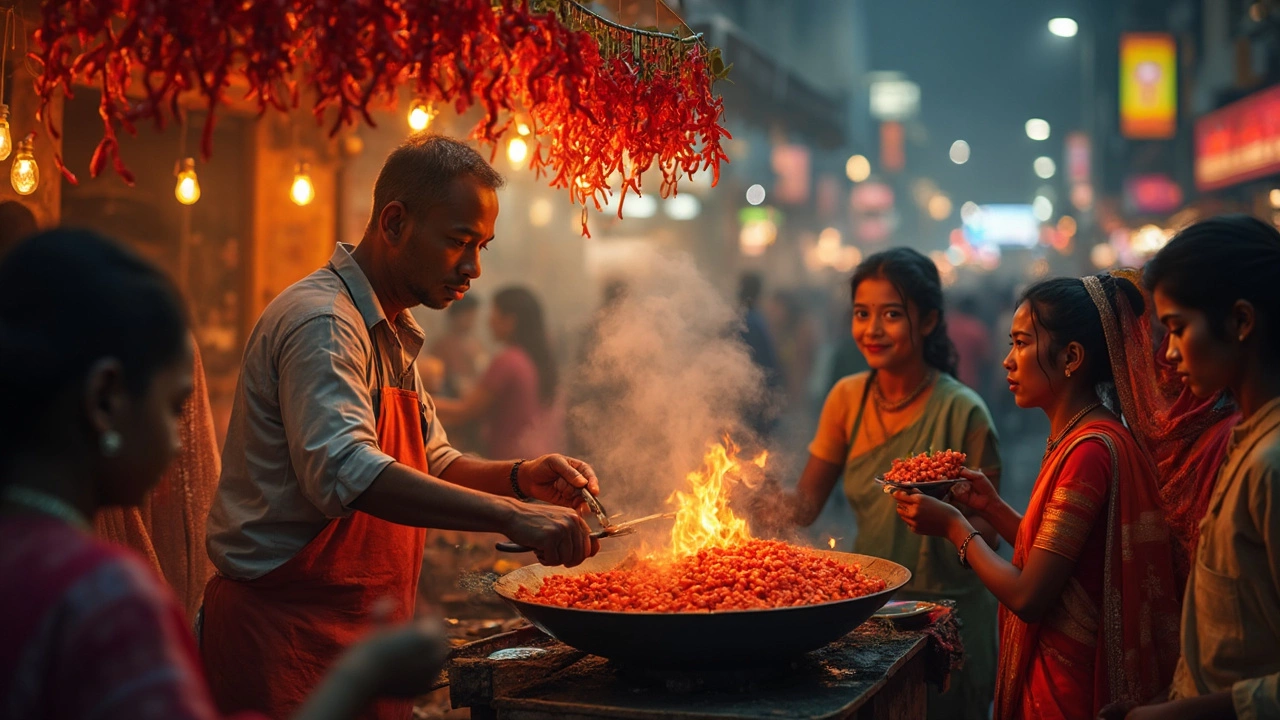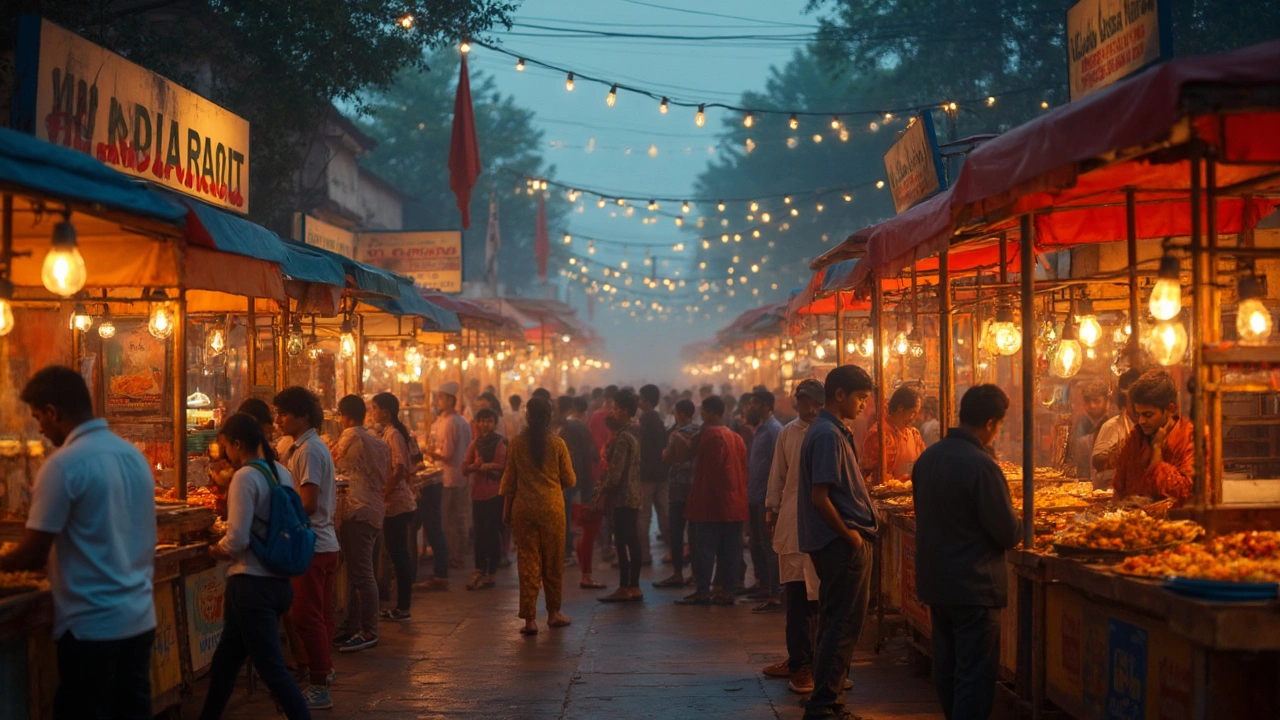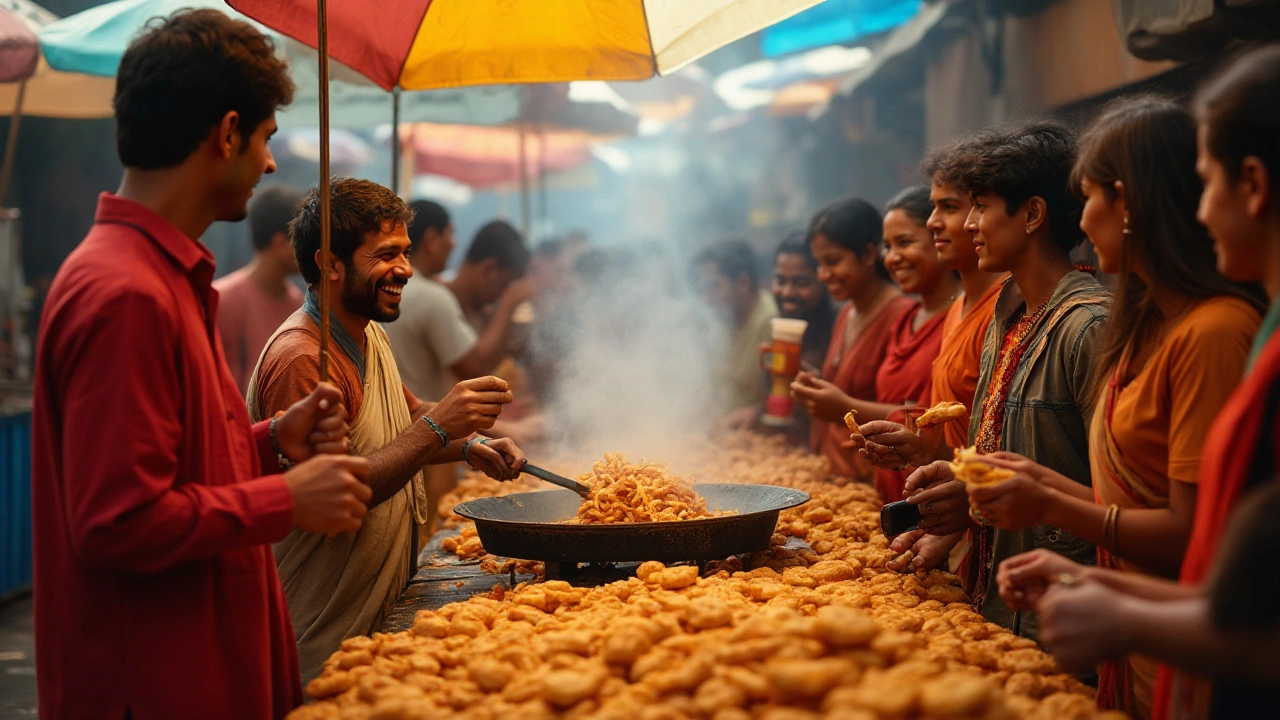Street Food India – Your Quick Guide to the Best Snacks
If you’ve ever walked down a busy Indian market, you know the aroma of frying onions, spicy chilies and sweet syrup can pull you in like a magnet. Street food isn’t just a quick bite; it’s a cultural experience that tells you a lot about a city’s history and daily life. Below you’ll find the top street foods, where they’re most popular, and a few handy tips to enjoy them safely.
What People Eat Most on the Street
From the north to the south, a few snacks dominate the scene. Pani Puri (or Gol Gappa) is a hollow crisp ball filled with tamarind water, potatoes and chickpeas. It’s a burst of sweet, sour and spicy in every bite. Vada Pav is Mumbai’s answer to a burger – a spiced potato fritter tucked into a bun with a tangy chutney. In Kolkata, Jhal Muri, a mix of puffed rice, peanuts and mustard oil, offers a crunchy, spicy snack that’s easy to eat on the go.
Down south, Masala Dosa is a thin rice‑crêpe stuffed with spiced potatoes, usually served with coconut chutney and sambar. On the western coast, especially in Goa, Pork Sausage Roll (or Chorizo Momo) is a favorite, packed with smoky pork and local spices. In the east, Paneer Tikka sticks grilled over open flame make for a protein‑rich mouthful.
Where to Find These Treats
Every major city has its own street‑food hotspots. In Delhi, head to the lanes of Chandni Chowk for kebabs, chaat and jalebi. Chennai’s Marina Beach promenade serves up fresh banana fritters and sundal. Pune’s Tulsi Baug area is famous for misal pav – a spicy lentil dish topped with crunchy farsan.
Smaller towns often have a “food court” pattern where vendors line the main road. Look for crowds; a busy stall usually means the food is fresh and tasty. If you’re traveling by train, the platform stalls near major stations are also great for quick bites.
While street food is delicious, a few safety tips keep the experience pleasant. Choose stalls with clean cooking areas and fresh ingredients. If a vendor is handling food with gloves or a tongs, that’s a good sign. Stick to items cooked right in front of you – the heat kills most germs.
Don’t be afraid to ask the vendor for a taste before ordering a full portion. Most sellers love sharing a sample, and it helps you decide if the spice level is right for you. If you’re not used to very spicy food, ask for “mild” or ask for a yogurt‑based side to calm the heat.
Finally, bring cash. Many street vendors don’t accept cards, and having small change speeds up the purchase. Keep a small bottle of water handy, but remember that bottled water is safer than tap water in many areas.
With these basics, you’re ready to explore India’s vibrant street‑food world. Whether you’re chasing the perfect Pani Puri or just want a quick snack between sightseeing, the streets have something flavorful waiting for you. Enjoy the colors, the smells, and the endless variety – India’s street food is a tasty way to travel the country without leaving the sidewalk.
Why Is the Left Hand Considered Unclean in India? A Cultural Guide to Eating Street Food
Discover why the left hand is considered unclean in India and how this cultural norm shapes the way people eat street food. Learn the history, practical tips, and deeper meaning behind this widespread tradition.
What Is India's Most Common Street Food? - Pani Puri Explained
Discover why Pani Puri (Golgappa/Phuchka) is India's most common street food, its regional twists, home recipe, and safety tips for enjoying it.
Which State Eats the Most Spicy Food in India? Street Food Showdown
Ever wondered which Indian state takes the crown for the spiciest eats? This article digs into India's spice obsession, focusing on street food that turns up the heat. You'll learn which region can't get enough of chilies, exactly what to order if you love spicy food, and even tips to handle the heat. We bust some myths about spice levels and share little-known facts that'll surprise even the most hardcore foodie. If you're chasing fiery flavors in India, this is your crash course.
Is it Illegal to Eat Steak in India? Street Food Rules Unpacked
Curious if eating steak in India is against the law? This article breaks down the real facts about India’s steak and beef regulations. We’ll clear up what’s legal, what’s not, and why the rules change from state to state. Get tips for street food lovers and find out where you can actually try steak dishes. Navigate the local laws and taste the best of Indian street food without any trouble.
Exploring the Delicious Risks: Is Indian Street Food Safe for Tourists?
Indian street food is a vibrant and essential part of the country's culinary landscape, laden with flavors and aromas. For tourists, it can be an exciting way to experience Indian culture but concerns about hygiene and safety often arise. This article delves into the colorful world of Indian street food, exploring its safety for tourists, sharing tips on how to minimize risks, and highlighting the experiences that make it an unforgettable aspect of a visit to India. Understanding what to look for and how to choose vendors wisely can ensure a safe and delicious adventure.
